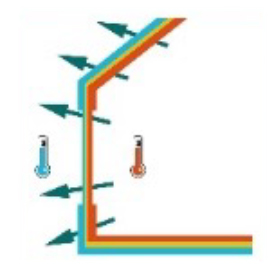Thermal Modelling of Buildings
Thermal modelling of buildings offers a wide range of benefits for both architects and engineers. This method of analysis allows for greater insight into the behaviour and potential performance of a building’s thermal design, enabling users to identify energy-saving solutions and optimise their overall design.
It can also reveal any potential problems in advance, allowing them to be addressed before they become major issues. The thermal modelling of buildings also provides valuable information regarding indoor air quality, helping improve occupant comfort levels while reducing risks associated with health hazards such as mould growth or overheating.
- Gain insights into a building’s behaviour and performance
- Identify areas where costs-savings can be made
- Optimise your design for the best experience for occupants

Thermal Bridge Assessment
A thermal bridge is a particular area of a building construction which has a higher heat loss than the surrounding area. A thermal bridge may be assessed in order to quantify the additional heat loss in this area and to determine the risk of condensation and mould growth on the building element due to a lower surface temperature caused by the thermal bridge.

Generally speaking, there are two types of thermal bridges:
Repeating thermal bridges
This can include the timber or metal frame structure which penetrates the main insulation layer, which results in additional heat loss in roofs and walls. These repeating thermal bridges are generally accounted for in U-value calculations.
Non-repeating thermal bridges
These cause heat loss at junctions between building elements such as wall-to-floor, wall-to-roof, and around windows.
In the second case, the additional heat loss due to non-repeating thermal bridges is addressed by calculating what is known as the ‘psi’ value and the risk of surface condensation is assessed by calculation of the ‘fRSI’ value.
Why Thermal Modelling?
There is a legal requirement in TGD Part L for building designers to identify and address potential thermal bridges:
“1.3.3.1 To avoid excessive heat losses and local condensation problems, reasonable care should be taken to ensure continuity of insulation and to limit local thermal bridging, e.g. around windows, doors and other wall openings, at junctions between elements and other locations. In general, thermal bridges should not pose a risk of surface or interstitial condensation.”
BET thermal modellers carry out accredited thermal bridge analysis to the latest regulations and standards using advanced finite element analysis software, whatever your requirements.

BET provides cost-effective solutions specifically tailored to your needs and project requirements. Get in touch to learn how we can keep your next project compliant and on track.
